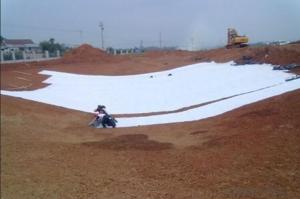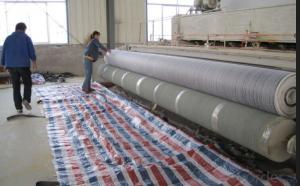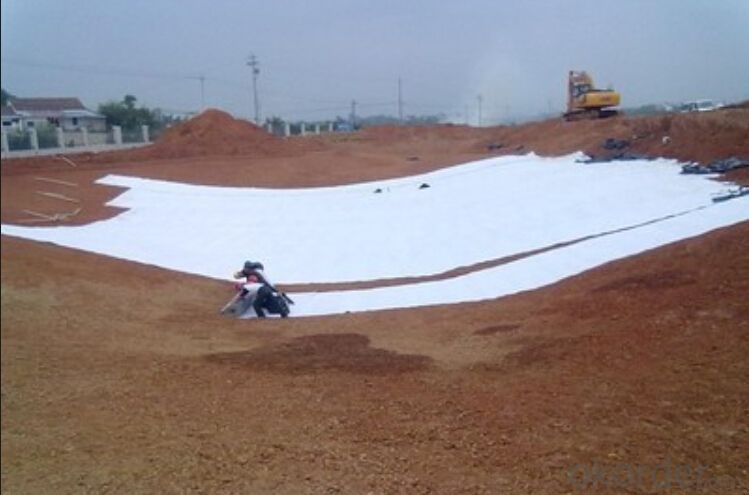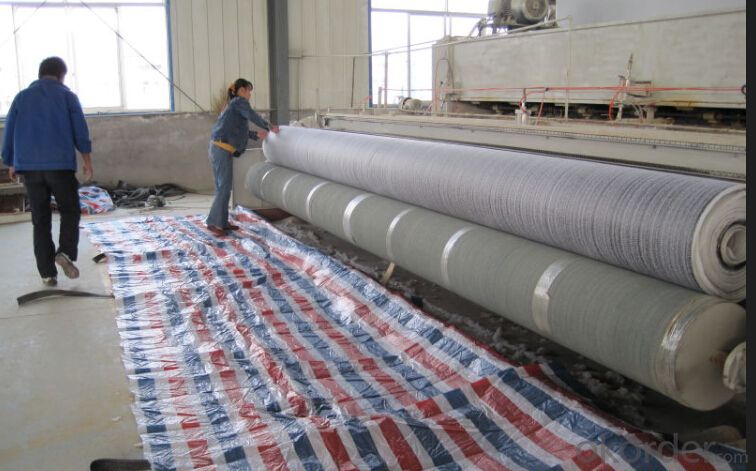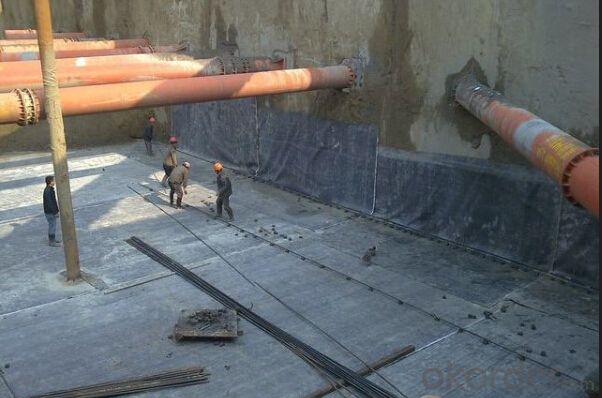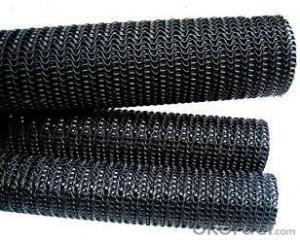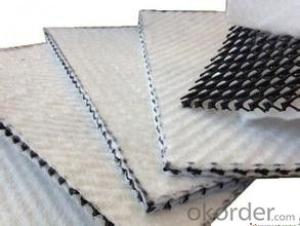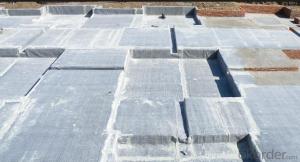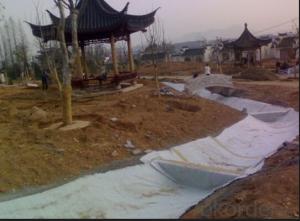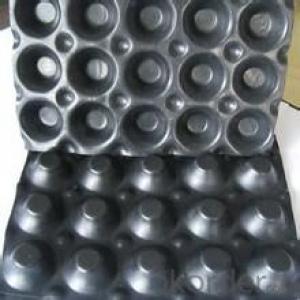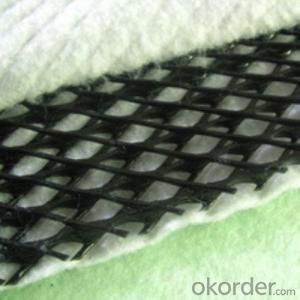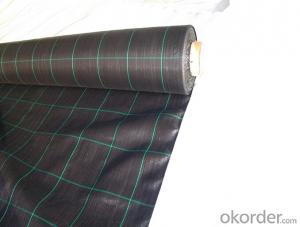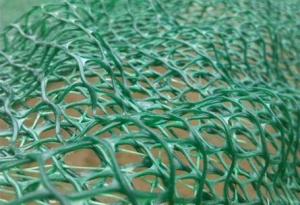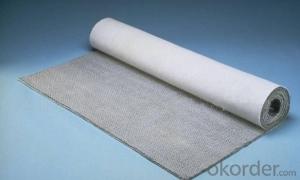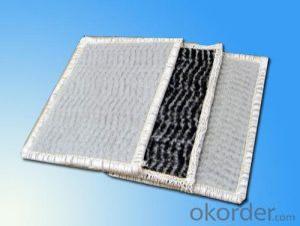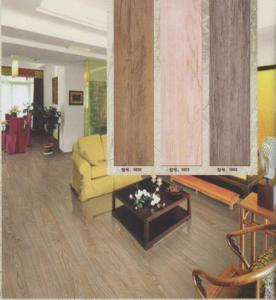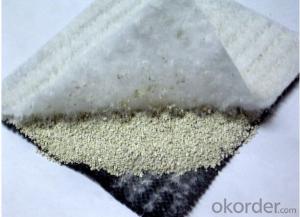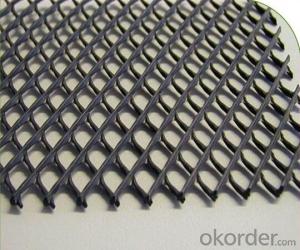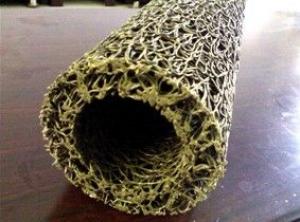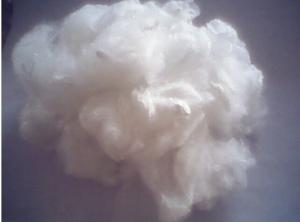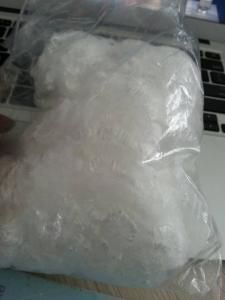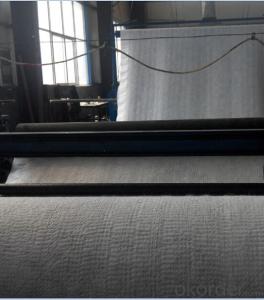Hot Sell Geocomposite Geosynthetic Clay Liner/GCL
- Loading Port:
- Qingdao
- Payment Terms:
- TT OR LC
- Min Order Qty:
- 5000 m²
- Supply Capability:
- 100000 m²/month
OKorder Service Pledge
OKorder Financial Service
You Might Also Like
GCL(Geocomposite Geosynthetic Clay Liner)
Description :
Geosynthetic clay liners (GCLs) are high performance needle punched environmental reinforced composites which combine two durable geotextile outer layers with a uniform core of natural sodium bentonite clay to form a hydraulic barrier. Fibers from the non-woven geotextile are needle punched through the layer of bentonite and incorporated into the other geotextile (either a woven or non-woven).when hydrated under a confining load, the bentonite swells to form a low permeability clay layer with the equivalent hydraulic protection of several feet of compacted clay.
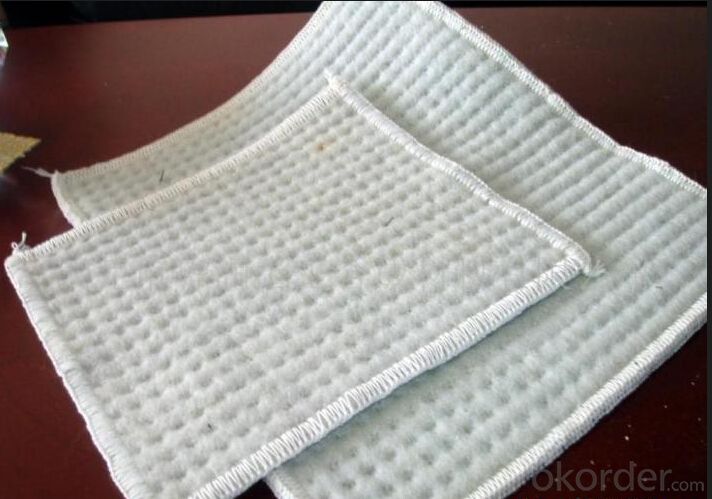
Specification:
Mass per unit ≥ 4000g / m²
Width: 4-6 m
Size: 5.8 x 30m , or customized
bentonite sandwiched between two layers of geotextile
Features:
1) Environment friendly. Liu Fangzi GCL is made of natural raw materials of sodium bentonite. Aging and corrosion never happen. It can keep its quality and then it does not cause any injuries and pollution for human and the environment. It is not only waterproof, but also has good ventilation performance. It can stick up for the exchange of the ecological environment. It is a pure natural, new, green waterproof material.
2) Permanent waterproof, excellent performance. Natural sodium bentonite has been formed for billions of years.Its waterproof properties are much longer than that of the buildings. Sodium bentonite would transform to high density septum under hydro pressure. When the thickness is 3mm, the permeability is below a×10-11/sec(a=1~9), which equals to the density of 100 times of the clay with 30 mm thickness. Water retention performance is evident.
3) Easy to use. Bentonite powder, nails and washers are enough for connection and fixation. Construction is not constrained by weather conditions and it could be taken under cold or wet conditions. Bentonite powder is spread on overlap point. When water comes, GCL would be overlapped automatically. It has been so far the only material that starts the waterproof effect by water in the world. It is not necessary to take additional examination when the construction is completed. The repair works are easy in case of waterproof defects. Among the existing waterproof materials, GCL’s construction period is the shortest and its operation is the easiest. It has an eminent effect on shortening the construction period as well as saving the cost.
4) Strong Self-Restore Capacity. The integration between waterproof material and its target enables GCL a 20~28 times swelling volume. Even if concrete structure trembles or subsides, the bentonite in GCL would restore the crack of 2mm or below on the concrete structure immediately. Even if the diameter of perforation reaches 30 mm, the restoration will be finished within 15 days completely.
Applications:
Seepage proofing, anticorrosion, leaking stoppage and reinforcement
1. Municipal engineering, underground construction of subway, buildings as well as the roof tank.
2. Environmental sanitation, solid waste landfill, sewage farm, industrial waste
3. water conservancy, lake, river, dam and reservoir.
4. Garden and park, artificial lake and golf cause pool.
5. Petrochemical engineering, mining industry and agriculture engineering
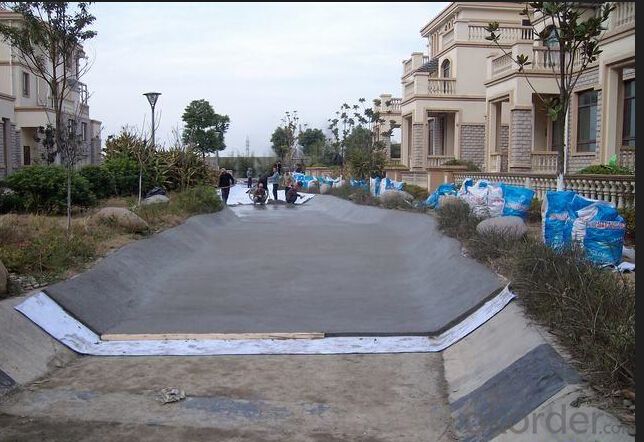
GCL Technical Index
Item | Specification | ||||
GCL-NP | GCL-OF | GCL-AH | |||
Mass per unit g/m2 | ≥ 4000 (not less than the specified value) | ≥ 4000 (not less than the specified value) | ≥ 4000 (not less than the specified value) | ||
GCL expansion index ml/2g | ≥24 | ≥24 | ≥24 | ||
Blue absorption power g/100g | ≥ 30 | ≥ 30 | ≥ 30 | ||
Tensile Strength N/ 100mm | ≥ 600 | ≥ 700 | ≥ 600 | ||
Elongation at maximum load % | ≥ 10 | ≥ 10 | ≥ 8 | ||
Peel strength N / 100mm | Nonwoven geotextile and woven geotextile | ≥ 40 | ≥ 40 | - | |
PE geommebrane and nonwoven geotextile | - | ≥ 30 | - | ||
Permeability coefficient m/s | ≤ 5.0x10-11 | ≤ 5.0x10-12 | ≤ 1.0x10-12 | ||
Hydrostatic pressure resistant | 0.4 Mpa , 1h, no leakage | 0.6 Mpa ,1h,no leakage | 0.6Mpa ,1h, no leakage | ||
Filter loss ml | ≤ 18 | ≤ 18 | ≤ 18 | ||
Durability of bentonite ml/ 2g | ≥ 20 | ≥ 20 | |||
FAQ:
How many quantity for one 20'' container?
About 5,000m2, 16rolls
What's your delivery time?
About 15-20days against deposit received
. What's your package?
Per roll with two pieces woven bag
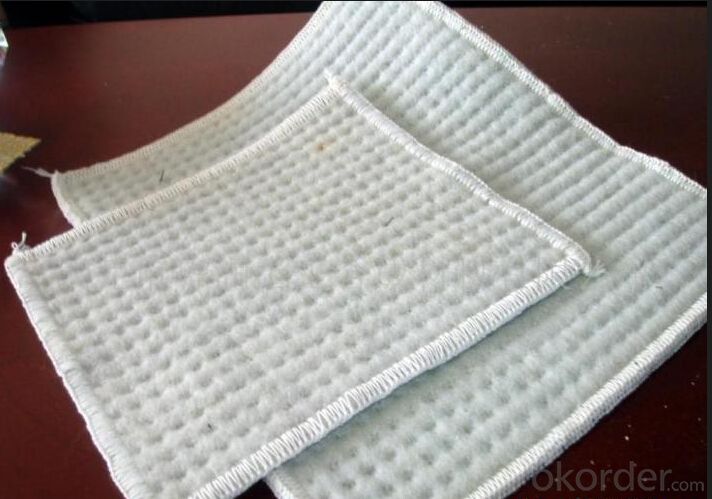
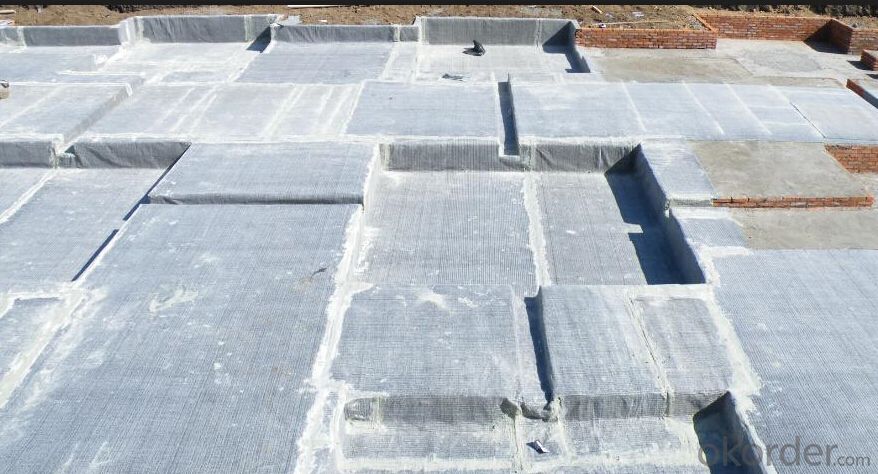
- Q: Are there any earthwork products specifically designed for golf course construction?
- Yes, there are earthwork products specifically designed for golf course construction. These products include specialized soils, such as sand-based mixes for greens and tees, as well as drainage systems and turf reinforcement products. These materials are carefully selected and engineered to meet the unique needs and specifications of golf course construction.
- Q: How do earthwork products help with sediment control?
- Earthwork products such as silt fences, sediment basins, and erosion control blankets are specifically designed to help with sediment control. These products act as physical barriers, preventing soil erosion and the movement of sediment from construction sites or disturbed areas into nearby water bodies. Silt fences, for example, are installed along the perimeter of a site to intercept and filter sediment-laden runoff, while sediment basins collect and contain sediment-laden water, allowing the sediment to settle before the water is discharged. Erosion control blankets, on the other hand, provide temporary stabilization by covering bare soil, preventing erosion caused by wind or water. Overall, these earthwork products play a crucial role in minimizing the environmental impact of construction activities and protecting water quality.
- Q: Why civil engineering materials are important
- From the perspective of resources and the environment and development prospects and other considerations and writing: such as the availability of materials, renewable, reusable, energy consumption, carbon sinks, etc., a lot of small, and need to find the relevant literature.
- Q: How do geosynthetic liners prevent seepage in fish ponds?
- Geosynthetic liners prevent seepage in fish ponds by creating a barrier between the water in the pond and the surrounding soil. These liners are made of impermeable materials, such as high-density polyethylene, that do not allow water to pass through. This prevents seepage of water from the pond, ensuring that the water level remains stable and prevents any potential contamination from the soil.
- Q: What are the specific applications of geogrid-reinforced walls in earthwork projects?
- Geogrid-reinforced walls have specific applications in earthwork projects such as slope stabilization, retaining walls, and reinforced soil structures. These walls are used to provide additional strength and stability to the soil, preventing erosion, landslides, and structural failure. Geogrid-reinforced walls are commonly employed in road and railway construction, embankments, and mining projects to withstand lateral earth pressures and increase the overall integrity of the earthwork structures.
- Q: What are the different types of geosynthetic reinforcements for bridge decks?
- There are several types of geosynthetic reinforcements that can be used for bridge decks, including geotextiles, geogrids, and geocomposites. Geotextiles are permeable fabrics that can be used to separate different layers of soil, provide filtration, and prevent soil erosion. Geogrids are typically made of high-strength polymers and are used to reinforce soil or aggregate layers, improving their load-bearing capacity. Geocomposites combine the properties of geotextiles and geogrids, providing both separation and reinforcement functions. These geosynthetic reinforcements are commonly used in bridge deck construction to enhance stability, improve durability, and reduce maintenance requirements.
- Q: Can earthwork products be used in retaining wall construction?
- Yes, earthwork products can be used in retaining wall construction. Earthwork products such as geotextiles, geogrids, and geocells are commonly used to reinforce soil and provide stability in retaining walls. These materials can help improve the strength and durability of the retaining wall, preventing soil erosion and enhancing its overall performance.
- Q: What are the different surface treatments available for earthwork products?
- Some of the different surface treatments available for earthwork products include stabilization, erosion control, and sealing.
- Q: How do earthwork products help with shoreline stabilization?
- Earthwork products, such as geotextiles and geogrids, play a crucial role in shoreline stabilization. These materials are used to reinforce and protect the soil, preventing erosion and maintaining the stability of the shoreline. By providing a strong and stable base, earthwork products help to reduce the impact of waves, currents, and water flow on the shoreline. Additionally, they promote vegetation growth, further enhancing the stability of the shoreline. Overall, earthwork products are essential in preventing shoreline erosion and preserving coastal ecosystems.
- Q: What are the key considerations when using geosynthetic materials in dam construction?
- When using geosynthetic materials in dam construction, some key considerations include the type and quality of the geosynthetic material, its compatibility with the soil and other construction materials, design and installation considerations, and long-term performance and durability. It is essential to select the appropriate geosynthetic material that can withstand the specific site conditions and provide the necessary functions such as filtration, separation, reinforcement, or drainage. Compatibility with the soil and other materials is crucial to ensure proper interaction and performance. The design and installation process should be carefully planned and executed to ensure the geosynthetic materials are properly integrated into the dam structure. Finally, long-term performance and durability should be assessed to ensure the geosynthetic materials can withstand the anticipated loads, environmental conditions, and potential aging factors over the dam's lifespan.
Send your message to us
Hot Sell Geocomposite Geosynthetic Clay Liner/GCL
- Loading Port:
- Qingdao
- Payment Terms:
- TT OR LC
- Min Order Qty:
- 5000 m²
- Supply Capability:
- 100000 m²/month
OKorder Service Pledge
OKorder Financial Service
Similar products
Hot products
Hot Searches
Related keywords
